Honda BF60, BFP60 Owner's Manual
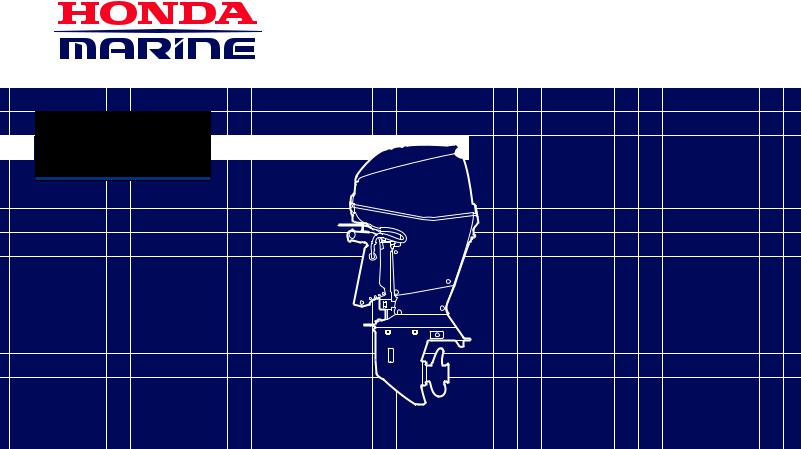
BF60A BFP60A
Owner’s Manual

 Click to Save As
Click to Save As










Includes US and Canadian Models
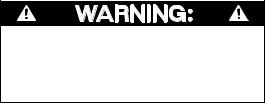
The engine exhaust from this product contains chemicals known to the State of California to cause cancer, birth defects, or other reproductive harm.
Keep this Owner’s Manual handy, so you can refer to it at any time. This Owner’s Manual is considered a permanent part of the outboard motor and should remain with the outboard motor if resold.
© 2013 Honda Motor Co., Ltd. – All Rights Reserved
The information and specifications included in this publication were in effect at the time of approval for printing. Honda Motor Co., Ltd. reserves the right, however, to discontinue or change specifications or design at any time without notice and without incurring any obligation whatever. No part of this publication may be reproduced without written permission.

Congratulations on your selection of a Honda outboard motor. We are certain you will be pleased with your purchase of one of the finest outboard motors on the market.
We want to help you get the best results from your new outboard motor and to operate it safely. This manual contains information on how to do that; please read it carefully.
As you read this manual you will find information preceded by a




 symbol. That information is intended to help you avoid damage to your outboard motor, other property, or the environment.
symbol. That information is intended to help you avoid damage to your outboard motor, other property, or the environment.
INTRODUCTION
We suggest you read the warranty policy to fully understand its coverage and your responsibilities of ownership.
When your outboard motor needs scheduled maintenance, keep in mind that your Honda Marine dealer is specially trained in servicing Honda outboard motors. Your Honda Marine dealer is dedicated to your satisfaction and will be pleased to answer your questions and concerns.
Best Wishes,
Honda Motor Co., Ltd.
1

INTRODUCTION
A FEW WORDS ABOUT SAFETY
Your safety and the safety of others are very important. And using this outboard motor safely is an important responsibility.
To help you make informed decisions about safety, we have provided operating procedures and other information on labels and in this manual. This information alerts you to potential hazards that could hurt you or others.
Of course, it is not practical or possible to warn you about all the hazards associated with operating or maintaining an outboard motor. You must use your own good judgment.
You will find important safety information in a variety of forms, including:
•Safety Labels – on the outboard motor.
•Safety Messages – preceded by a safety alert symbol  and one of three signal words, DANGER, WARNING, or CAUTION.
and one of three signal words, DANGER, WARNING, or CAUTION.
These signal words mean:
You WILL be KILLED or SERIOUSLY HURT if you don’t follow instructions.
You CAN be KILLED or SERIOUSLY HURT if you don’t follow instructions.
You CAN be HURT if you don’t follow instructions.
•Safety Headings – such as IMPORTANT SAFETY INFORMATION.
•Safety Section – such as OUTBOARD MOTOR SAFETY.
•Instructions – how to use this outboard motor correctly and safely.
This entire book is filled with important safety information – please read it carefully.
2

OUTBOARD MOTOR SAFETY ................................... |
7 |
IMPORTANT SAFETY INFORMATION .............. |
7 |
SAFETY LABEL LOCATIONS .............................. |
9 |
CONTROLS AND FEATURES ................................... |
13 |
CONTROL AND FEATURE |
|
IDENTIFICATION CODES ............................... |
13 |
COMPONENT AND CONTROL LOCATIONS .... |
14 |
CONTROLS ............................................................ |
22 |
LHT Type (tiller handle) |
|
Ignition Switch .................................................... |
22 |
Emergency Stop Switch Clip and |
|
Emergency Stop Switch .................................. |
22 |
Throttle Grip ........................................................ |
23 |
Throttle Friction Adjuster ................................... |
24 |
Gearshift Lever .................................................... |
24 |
Steering Friction Adjuster ................................... |
25 |
LRT and XRT Types (remote control) |
|
Side-Mount Control Type (optional equipment) .... |
26 |
Ignition Switch ................................................ |
26 |
Emergency Stop Switch Clip and Emergency |
|
Stop Switch ................................................. |
27 |
Gearshift/Throttle Control Lever .................... |
28 |
Fast Idle Lever ................................................ |
29 |
Common Controls ............................................... |
30 |
Power Trim/Tilt Switch .................................. |
30 |
Power Tilt Switch (engine pan) ...................... |
31 |
Manual Relief Valve ....................................... |
32 |
CONTENTS |
|
TRL (Trolling) Control Switch |
|
[standard equipment (LHTC and |
|
LRTB types)], [optional equipment |
|
(except LHTC and LRTB types)] ......... |
32 |
Tilt Lock Lever ................................................ |
33 |
Engine Cover Latches ...................................... |
33 |
Trim Tab .......................................................... |
34 |
INSTRUMENTS ..................................................... |
35 |
Trim Meter (optional equipment) ........................ |
35 |
Tachometer (optional equipment) ....................... |
35 |
Rudder Meter [standard equipment |
|
(BFP60A LRTB type)], |
|
[optional equipment (other LRT and |
|
XRT types)] ............................................ |
36 |
Fuel Gauge (optional equipment) ........................ |
36 |
INDICATORS ......................................................... |
37 |
Alternator (ACG) Indicator ................................. |
37 |
Malfunction Indicator .......................................... |
37 |
Oil Pressure Indicator .......................................... |
38 |
Overheat Indicator ............................................... |
39 |
Cooling System Indicator .................................... |
39 |
3

CONTENTS
OTHER FEATURES .............................................. |
40 |
Overrev Limiter ................................................... |
40 |
Portable Fuel Tank (optional equipment) ........... |
40 |
Fuel Filler Cap Vent Knob (optional equipment) ... |
41 |
Fuel Priming Bulb ............................................... |
41 |
NMEA Interface Coupler .................................... |
41 |
Anodes ................................................................. |
42 |
BEFORE OPERATION ................................................ |
43 |
ARE YOU READY TO GET UNDERWAY? ....... |
43 |
IS YOUR OUTBOARD MOTOR |
|
READY TO GO? ........................................... |
43 |
Tiller Handle Height/Angle Adjustment |
|
(LHT type) ...................................................... |
45 |
OPERATION ................................................................ |
46 |
SAFE OPERATING PRECAUTIONS ................... |
46 |
BREAK-IN PROCEDURE ..................................... |
46 |
PORTABLE FUEL TANK (optional equipment) .... |
47 |
FUEL HOSE CONNECTIONS .............................. |
48 |
FUEL PRIMING ..................................................... |
49 |
INFREQUENT OR OCCASIONAL USE .............. |
49 |
STARTING THE ENGINE .................................... |
50 |
LHT Type (tiller handle) ..................................... |
50 |
LRT and XRT Types (remote control) |
|
Side-Mount Control Type ............................... |
53 |
EMERGENCY STARTING ................................... |
56 |
STOPPING THE ENGINE ..................................... |
59 |
Emergency Engine Stopping ............................... |
59 |
Normal Engine Stopping ..................................... |
60 |
GEARSHIFT AND |
|
THROTTLE OPERATION ............................. |
62 |
LHT Type (tiller handle) ..................................... |
62 |
LRT and XRT Types (remote control) |
|
Side-Mount Control Type ................................ |
63 |
STEERING .............................................................. |
64 |
LHT Type (tiller handle) ..................................... |
64 |
Steering Friction Adjuster ................................... |
64 |
LRT and XRT Types (remote control) ................ |
64 |
CRUISING .............................................................. |
65 |
Trolling Speed Control |
|
[standard equipment (LHTC and |
|
LRTB types)], [optional equipment |
|
(except LHTC and LRTB types)] ............. |
67 |
TRIM TAB .............................................................. |
68 |
SHALLOW WATER OPERATION ....................... |
69 |
MOORING, BEACHING, LAUNCHING .............. |
70 |
MULTIPLE OUTBOARD MOTORS ..................... |
71 |
SERVICING YOUR OUTBOARD MOTOR ............... |
72 |
THE IMPORTANCE OF MAINTENANCE .......... |
72 |
MAINTENANCE SAFETY .................................... |
73 |
TOOL KIT and OWNER’S MANUAL .................. |
74 |
EMERGENCY STARTER ROPE .......................... |
74 |
MAINTENANCE SCHEDULE .............................. |
75 |
TRIM TAB ADJUSTMENT ................................... |
77 |
MANUAL RELIEF VALVE ................................... |
79 |
4
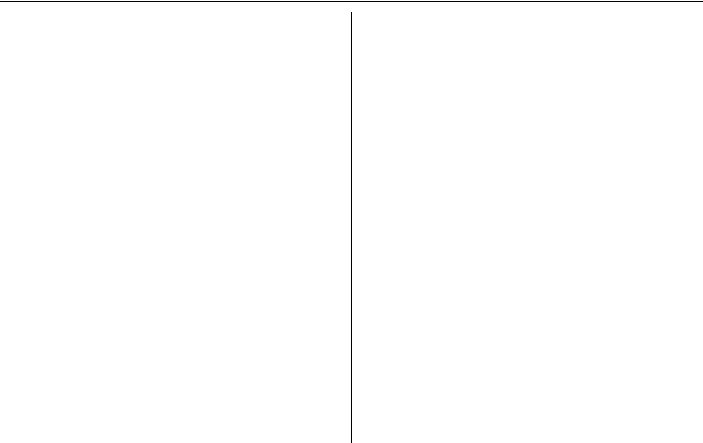
CONTENTS
ENGINE COVER REMOVAL AND |
|
INSTALLATION ............................................ |
79 |
Engine Oil Level Check ...................................... |
80 |
Engine Oil Change .............................................. |
82 |
Engine Oil Recommendations ............................. |
83 |
Spark Plug Service .............................................. |
84 |
Lubrication Points ............................................... |
86 |
REFUELING ........................................................... |
88 |
FUEL RECOMMENDATIONS ............................. |
90 |
Fuel Filter/Water Separator Inspection and |
|
Service ............................................................. |
91 |
Portable Fuel Tank and Tank Filter Cleaning |
|
(optional equipment) ....................................... |
94 |
Anode Replacement ............................................ |
95 |
Propeller Replacement ........................................ |
96 |
CLEANING AND FLUSHING .................................... |
98 |
Cleaning and Flushing ............................................. |
98 |
STORAGE ................................................................... |
100 |
Fuel .................................................................... |
100 |
Engine Oil ......................................................... |
103 |
HOISTING THE OUTBOARD MOTOR ............. |
103 |
STORAGE PRECAUTIONS ................................ |
103 |
REMOVAL FROM STORAGE ........................... |
104 |
TRANSPORTING ....................................................... |
105 |
WITH OUTBOARD MOTOR INSTALLED |
|
ON BOAT .......................................................... |
105 |
WITH OUTBOARD MOTOR REMOVED |
|
FROM BOAT .................................................... |
105 |
TAKING CARE OF UNEXPECTED |
|
PROBLEMS ...................................................... |
106 |
ENGINE WILL NOT START ............................... |
106 |
HARD STARTING OR STALLS AFTER |
|
STARTING ....................................................... |
109 |
ENGINE OVERHEATS ........................................ |
110 |
FUSES ................................................................... |
111 |
Electric Starter Will Not Operate ...................... |
111 |
Battery Will Not Charge .................................... |
111 |
Fuse Replacement .............................................. |
112 |
OIL PRESSURE INDICATOR GOES OFF AND |
|
ENGINE SPEED IS LIMITED ......................... |
114 |
OVERHEAT INDICATOR COMES ON AND |
|
ENGINE SPEED IS LIMITED ......................... |
115 |
SUBMERGED OUTBOARD MOTOR ................ |
117 |
5

CONTENTS |
|
TECHNICAL INFORMATION ................................. |
119 |
Serial Number Locations ....................................... |
119 |
Battery ................................................................... |
120 |
Emission Control System Information .................. |
120 |
Star Label .............................................................. |
123 |
Specifications ........................................................ |
125 |
CONSUMER INFORMATION .................................. |
128 |
Honda Publications ............................................... |
128 |
Customer Service Information .............................. |
128 |
Warranty Statements ............................................. |
131 |
Distributor’s Limited Warranty ............................. |
131 |
Emission Control System Warranty ...................... |
136 |
Distributor’s Warranty .......................................... |
140 |
INDEX ......................................................................... |
143 |
6

IMPORTANT SAFETY INFORMATION
The Honda BF60A/BFP60A outboard motors are designed for use with boats that have a suitable manufacturer’s power recommendation. Other uses can result in injury to the operator or damage to the outboard motor and other property.
Most injuries or property damage can be prevented if you follow all instructions in this manual and on the outboard motor. The most common hazards are discussed in this chapter, along with the best way to protect yourself and others.
OUTBOARD MOTOR SAFETY
Operator Responsibility
•It is the operator’s responsibility to provide the necessary safeguards to protect people and property.
Know how to stop the engine quickly in case of emergency. Understand the use of all controls.
•Stop the engine immediately if anyone falls overboard, and do not run the engine while the boat is near anyone in the water.
•Always stop the engine if you must leave the controls for any reason.
•Attach the emergency stop switch lanyard securely to the operator.
•Always wear a PFD (Personal Flotation Device) while on the boat.
•Familiarize yourself with all laws and regulations relating to boating and the use of outboard motors.
•Be sure that anyone who operates the outboard motor receives proper instruction.
•Be sure the outboard motor is properly mounted on the boat.
•Do not remove the engine cover while the engine is running.
7

OUTBOARD MOTOR SAFETY
Refuel With Care
•Gasoline is extremely flammable, and gasoline vapor can explode. Refuel outdoors, in a well-ventilated area, with the engine stopped. Never smoke near gasoline, and keep other flames and sparks away.
•Refuel carefully to avoid spilling fuel. Avoid overfilling the fuel tank.
•After refueling, tighten the filler cap securely. If any fuel is spilled, make sure the area is dry before starting the engine.
Carbon Monoxide Hazard
Exhaust contains poisonous carbon monoxide, a colorless, odorless gas. Breathing carbon monoxide can cause loss of consciousness and may lead to death.
If you run the engine in an area that is confined, or even partly enclosed, the air you breathe could contain a dangerous amount of exhaust gas.
Never run your outboard inside a garage or other enclosure.
8

OUTBOARD MOTOR SAFETY
SAFETY LABEL LOCATION
LRTA, LRTB and XRTA Types
READ OWNER’S MANUAL
EMERGENCY ENGINE STARTING
The label shown here contains important safety information. Please read it carefully. This label is considered a permanent part of your outboard motor. If the label comes off or becomes hard to read, contact an authorized Honda Marine dealer for a replacement.
9
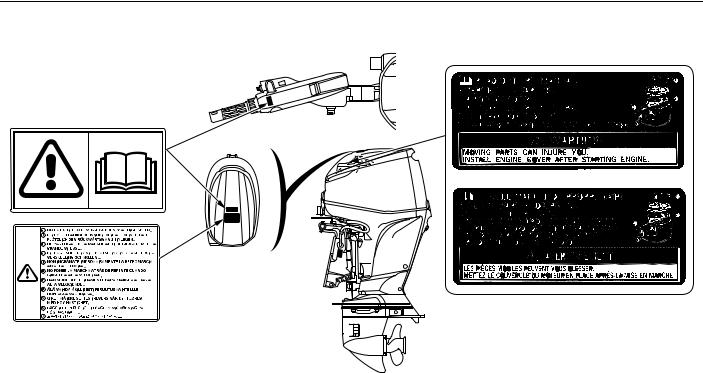
OUTBOARD MOTOR SAFETY
LHTC and LRTC Types
READ OWNER’S MANUAL
EMERGENCY ENGINE STARTING
READ OWNER’S MANUAL
* These labels come with the outboard motor.
The label shown here contains important safety information. Please read it carefully. This label is considered a permanent part of your outboard motor. If the label comes off or becomes hard to read, contact an authorized Honda Marine dealer for a replacement.
10
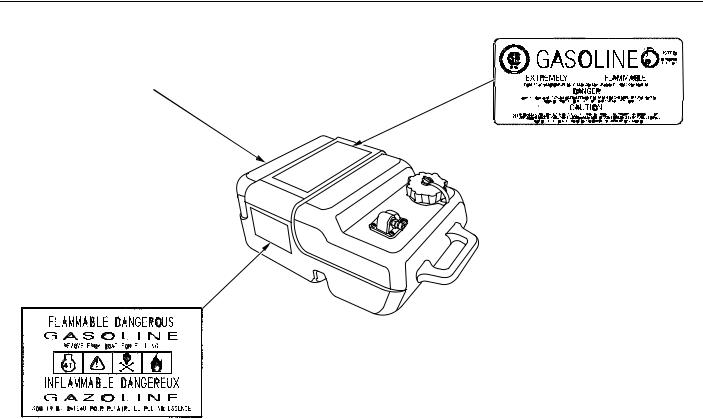
OUTBOARD MOTOR SAFETY
PORTABLE FUEL TANK (optional equipment)
FUEL CAUTION
11
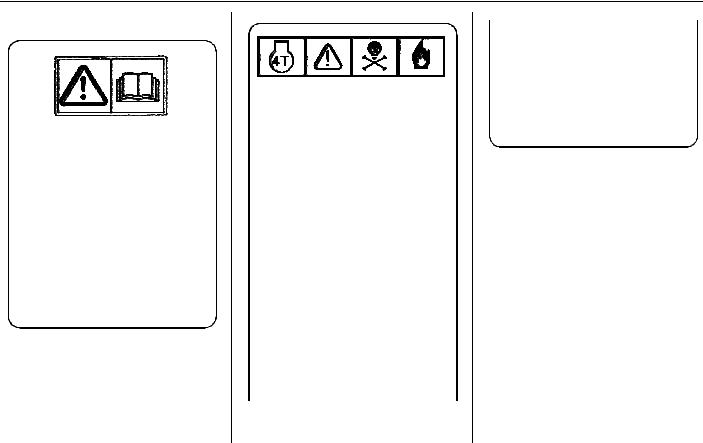
OUTBOARD MOTOR SAFETY
LHTC and LRTC Types
•Honda outboard motor is designed to give safe and dependable service if operated according to instructions.
Read and understand the Owner’s Manual before operating the outboard motor. Failure to do so could result in personal injury or equipment damage.
•Gasoline is harmful or fatal if swallowed. Keep the fuel tank out of reach of children.
•Gasoline is extremely flammable and is explosive under certain conditions. Refuel in a well-ventilated area with the engine stopped.
•Do not smoke or allow flames or sparks where the engine is refueled or where gasoline is stored.
•Do not overfill the fuel tank. After refueling make sure that the fuel tank cap is closed properly and securely.
•Be careful not to spill any fuel while refueling. Spilled fuel or fuel vapor may ignite. If any fuel is spilled, make sure that the area is dry before starting the engine.
12

CONTROLS AND FEATURES
CONTROL AND FEATURE IDENTIFICATION CODES
Model |
|
|
BF60A |
|
|
BFP60A |
|
||
Type |
|
LHTC |
LRTA |
LRTC |
XRTA |
LRTA |
LRTB |
LRTC |
XRTA |
Shaft Length |
L |
● |
● |
● |
|
● |
● |
● |
|
|
X |
|
|
|
● |
|
|
|
● |
Tiller Handle |
|
● |
|
|
|
|
|
|
|
Remote Control |
|
|
● |
● |
● |
● |
● |
● |
● |
Power Trim/Tilt |
|
● |
● |
● |
● |
● |
● |
● |
● |
Tachometer |
|
* |
* |
* |
* |
* |
* |
* |
* |
Trim Meter |
|
* |
* |
* |
* |
* |
* |
* |
* |
Rudder Meter |
|
|
* |
* |
* |
* |
● |
* |
* |
Tilt Limit Mechanism |
|
|
* |
* |
* |
* |
● |
* |
* |
Portable Fuel Tank (25 L) |
|
* |
* |
* |
* |
* |
* |
* |
* |
TRL (Trolling) Control Switch |
|
● |
* |
* |
* |
* |
● |
* |
* |
50° Steering Angle Rod |
|
— |
* |
* |
* |
● |
● |
● |
● |
*: Optional equipment
Refer to this chart for an explanation of the Type Codes used in this manual to identify control and feature applications. TYPE CODE (Example)
L R T A
Destination: A=American, B=American (optional applications equipped type), C=Canadian
T=Power Trim/Tilt
H=Tiller Handle
R=Remote Control
BF60A: L=20.5 in (521 mm) (Long Shaft), X=25.5 in (648 mm) (Extra Long Shaft)
BFP60A: L=20.9 in (531 mm) (Long Shaft), X=25.9 in (658 mm) (Extra Long Shaft)
13

CONTROLS AND FEATURES
COMPONENT AND CONTROL LOCATIONS
LHT Type (tiller handle)
ENGINE COVER
LATCH (front)
TILLER
HANDLE
PRODUCT  IDENTIFICATION
IDENTIFICATION 
 NUMBER
NUMBER 
ANODE
ENGINE COVER
FUEL HOSE
ENGINE COVER
LATCH (rear)
POWER TILT
SWITCH
IDLE PORT |
|
|
|
COOLING SYSTEM |
TILT LOCK LEVER |
||
INDICATOR |
|||
STERN |
|||
|
FLUSH PORT |
||
|
BRACKET |
||
|
CONNECTOR |
||
|
|
||
ANODE |
ENGINE OIL |
MANUAL |
|
(each side) |
DRAIN BOLT |
RELIEF VALVE |
|
TRIM TAB |
|
GEAR OIL |
|
|
LEVEL SCREW |
||
|
|
||
EXHAUST PORT/ |
COOLING WATER |
||
INTAKE PORT |
|||
WATER OUTLET PORT |
|||
(each side) |
|||
|
ANTIVENTILATION |
||
PROPELLER |
|
||
PLATE |
GEAR OIL DRAIN SCREW |
||
(optional equipment) |
|||
|
|||
14

CONTROLS AND FEATURES
ENGINE HANGERS
ACG FUSE
MAIN FUSE
BOX


 NMEA
NMEA
INTERFACE
COUPLER
|
OIL LEVEL |
|
|
|
DIPSTICK |
ENGINE OIL |
|
ENGINE SERIAL NUMBER |
SPARK PLUG CAPS |
||
FILLER CAP |
|||
FUEL FILTER/WATER SEPARATOR |
|
|
|
(inside strainer cup) |
|
|
15
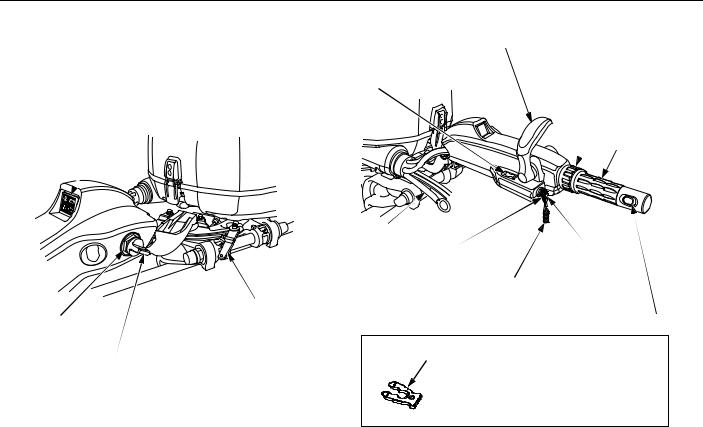
CONTROLS AND FEATURES
INDICATORS
(Oil pressure, Overheat, Alternator, Malfunction)
|
STEERING FRICTION |
IGNITION SWITCH |
ADJUSTER |
|
|
IGNITION SWITCH KEY |
|
GEARSHIFT LEVER
TRL (Trolling) CONTROL
SWITCH THROTTLE FRICTION ADJUSTER
THROTTLE
GRIP
FUEL HOSE
EMERGENCY STOP |
EMERGENCY |
|
STOP SWITCH |
||
SWITCH CLIP |
||
|
EMERGENCY STOP
SWITCH LANYARD
POWER TRIM/TILT SWITCH SPARE EMERGENCY STOP SWITCH CLIP
Store the spare emergency stop switch clip in the tool bag.
16
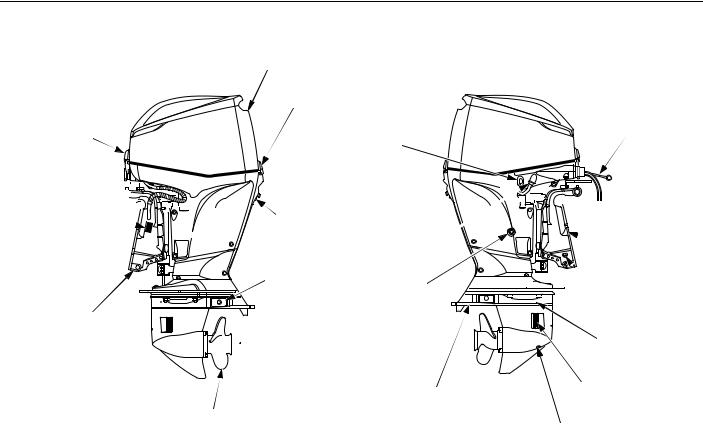
CONTROLS AND FEATURES
LRT and XRT Types (remote control)
ENGINE COVER
LATCH (front)
PRODUCT 


 IDENTIFICATION
IDENTIFICATION 



 NUMBER
NUMBER 

ANODE
ENGINE COVER
ENGINE COVER
LATCH (rear)
POWER TILT
SWITCH
 IDLE PORT
IDLE PORT
 COOLING SYSTEM
COOLING SYSTEM
INDICATOR
|
FLUSH PORT |
|
|
CONNECTOR |
|
ANODE |
ENGINE OIL |
|
(each side) |
||
DRAIN BOLT |
||
|
 TRIM TAB
TRIM TAB


 EXHAUST PORT/WATER OUTLET PORT
EXHAUST PORT/WATER OUTLET PORT
FUEL HOSE

 TILT LOCK
TILT LOCK 

 LEVER
LEVER

 STERN
STERN
BRACKET

 MANUAL RELIEF
MANUAL RELIEF 



 VALVE
VALVE
GEAR OIL
LEVEL SCREW
ANTIVENTILATION |
COOLING WATER |
INTAKE PORT |
|
PLATE |
(each side) |
PROPELLER |
|
(optional equipment) |
GEAR OIL DRAIN SCREW |
17
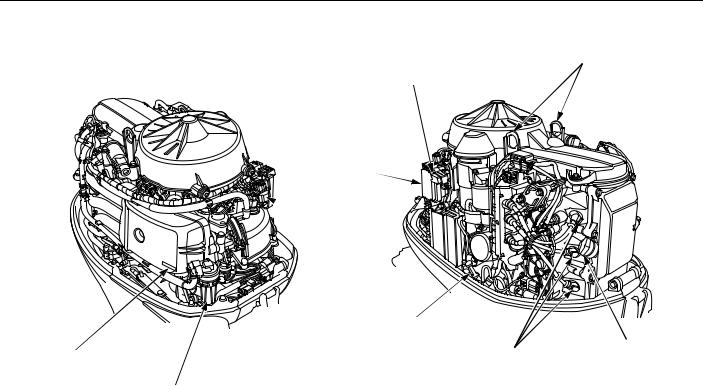
CONTROLS AND FEATURES
ENGINE HANGERS
ACG FUSE
MAIN FUSE
BOX


 NMEA
NMEA
INTERFACE
COUPLER
|
OIL LEVEL |
|
|
|
DIPSTICK |
ENGINE OIL |
|
ENGINE SERIAL NUMBER |
SPARK PLUG CAPS |
||
FILLER CAP |
|||
FUEL FILTER/WATER SEPARATOR |
|
|
|
(inside strainer cup) |
|
|
18
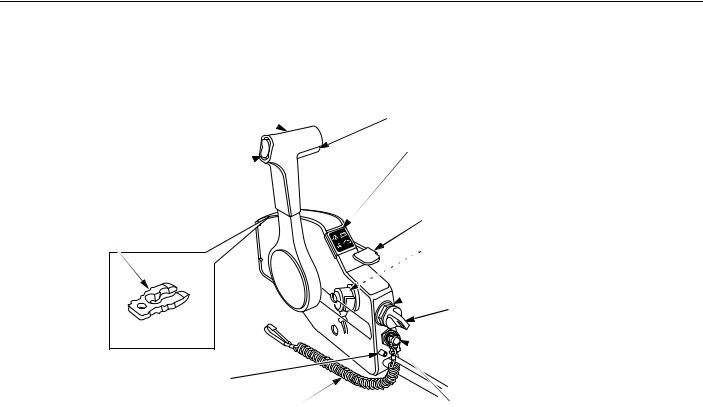
CONTROLS AND FEATURES
Remote Control Box Side-Mount Control Type (optional equipment)
GEARSHIFT/THROTTLE
CONTROL LEVER
POWER TRIM/TILT
SWITCH
SPARE EMERGENCY
STOP SWITCH CLIP
CONTROL LEVER
FRICTION ADJUSTER
EMERGENCY STOP
SWITCH LANYARD
NEUTRAL RELEASE LEVER
INDICATORS
(Oil pressure, Overheat, Alternator, Malfunction)
FAST IDLE LEVER
 BUZZER (inside)
BUZZER (inside)
 IGNITION SWITCH
IGNITION SWITCH
IGNITION SWITCH KEY
 EMERGENCY STOP
EMERGENCY STOP
SWITCH
EMERGENCY STOP
SWITCH CLIP
19

CONTROLS AND FEATURES
Portable Fuel Tank (optional equipment) Fuel Tank Hose Assembly (standard equipment)
FUEL HOSE CONNECTOR
FUEL GAUGE
PORTABLE FUEL TANK
VENT KNOB
FUEL TANK HOSE ASSEMBLY (standard equipment)
FUEL FILLER CAP
FUEL HOSE JOINT |
FUEL PRIMING BULB |
|
(outboard motor side) |
||
|
20
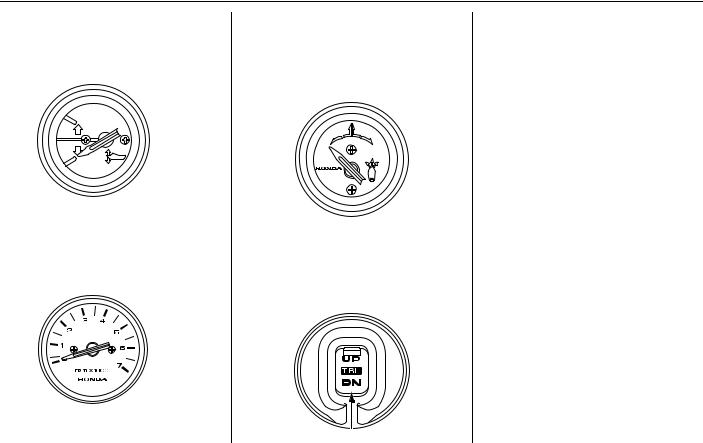
CONTROLS AND FEATURES
Trim Meter (optional equipment)
Tachometer (optional equipment)
Rudder Meter
[standard equipment (BFP60A LRTB type)]
[optional equipment (other LRT and XRT types)]
Trolling Control Switch Panel [standard equipment (LRTB type)]
[optional equipment (other LRT and XRT types)]
TRL (Trolling) CONTROL SWITCH
21

CONTROLS AND FEATURES
CONTROLS
LHT Type (tiller handle)
Ignition Switch
ON
START
OFF
|
IGNITION |
IGNITION SWITCH |
SWITCH |
KEY |
The ignition switch controls the ignition system and the starter motor.
Turning the ignition switch key to the START position operates the starter motor. The key automatically returns to the ON position when released from the START position.
The engine will not start unless the gearshift lever is in the N (neutral) position (p. 50) and the emergency stop switch clip is in the emergency stop switch.
Turning the ignition switch to the OFF position stops the engine.
Emergency Stop Switch Clip and
Emergency Stop Switch
EMERGENCY STOP SWITCH
EMERGENCY |
EMERGENCY STOP |
STOP SWITCH |
SWITCH CLIP |
LANYARD |
|
EMERGENCY STOP SWITCH CLIP
EMERGENCY STOP
SWITCH LANYARD
22

CONTROLS AND FEATURES
The emergency stop switch clip must be inserted in the emergency stop switch in order for the engine to start and run. The emergency stop switch lanyard must be attached securely to the operator or to the operator’s PFD (Personal Flotation Device).
When used as described, the emergency stop switch and emergency stop switch lanyard system stops the engine if the operator falls away from the controls.
A spare switch clip is supplied with the outboard motor.
SPARE SWITCH CLIP
Throttle Grip
THROTTLE
GRIP
INCREASE
THROTTLE INDEX MARK
POINTER
The throttle grip controls engine speed.
An index mark on the tiller arm shows throttle position and is helpful for setting the throttle correctly when starting (p. 62).
23

CONTROLS AND FEATURES
Throttle Friction Adjuster
THROTTLE FRICTION
ADJUSTER


 FIX
FIX
RELEASE
THROTTLE GRIP
The throttle friction adjuster adjusts resistance to throttle grip rotation.
Turn the adjuster clockwise to increase friction for holding a throttle setting while cruising.
Turn the adjuster counterclockwise to decrease friction for easy throttle grip rotation.
Gearshift Lever
R (reverse) |
N (neutral) |
|
F (forward) |
|
GEARSHIFT |
|
LEVER |
The gearshift lever is used to select F (forward), N (neutral), or R (reverse) gears.
The engine can be started with the gearshift lever in the N (neutral) position only.
SLOWEST

 SLOWEST
SLOWEST
THROTTLE GRIP
The shift lever will not move unless the throttle grip is in the fully closed position.
24

CONTROLS AND FEATURES
GEARSHIFT LEVER
You can chose which side of the tiller handle to have the gearshift lever installed. Consult your authorized Honda outboard motor dealer.
Steering Friction Adjuster
STEERING FRICTION ADJUSTER
TO DECREASE TO INCREASE FRICTION FRICTION (FREE) (LOCK)
The steering friction adjuster adjusts steering resistance.
Less friction allows the outboard motor to turn more easily. More friction helps to hold a steady course while cruising or to prevent the outboard motor from swinging while trailering the boat.
25

CONTROLS AND FEATURES
LRT and XRT Types (remote control)
For panel-mount or top-mount remote control information, refer to the instructions provided with the remote control equipment.
Side-Mount Control Type (optional equipment)
Ignition Switch
OFF ON START
IGNITION
SWITCH
EMERGENCY STOP |
|
SWITCH |
SWITCH CLIP |
The ignition switch controls the ignition system and the starter motor.
Turning the ignition switch key to the START position operates the starter motor. The key automatically returns to the ON position when released from the START position.
The ignition switch can be used to start the engine only when the control lever is in the N (neutral) position (p. 53) and the emergency stop switch clip is in the emergency stop switch.
Turning the ignition switch to the OFF position stops the engine.
26

CONTROLS AND FEATURES
Emergency Stop Switch Clip and |
The emergency stop switch clip must |
|
Emergency Stop Switch |
be inserted in the emergency stop |
|
|
|
switch in order for the engine to start |
EMERGENCY STOP SWITCH |
and run. The emergency stop switch |
|
|
|
lanyard must be attached to the |
|
|
operator’s PFD (Personal Flotation |
|
|
Device) or to the operator securely. |
|
|
When used as described, the |
|
|
emergency stop switch clip and |
|
|
emergency stop switch lanyard |
|
|
system stops the engine if the |
|
|
operator falls away from the controls. |
|
EMERGENCY |
|
EMERGENCY STOP |
STOP |
|
SWITCH |
|
|
SWITCH CLIP |
|
|
LANYARD |
|
|
|
|
|
EMERGENCY STOP |
EMERGENCY |
SWITCH CLIP |
STOP SWITCH |
|
LANYARD |
A spare switch clip is stored in a slot in the control housing and is provided in the tool bag (p. 74).
SPARE SWITCH CLIP
27
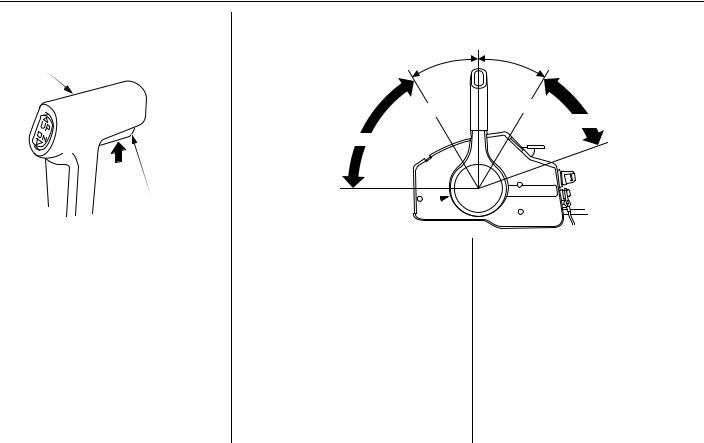
CONTROLS AND FEATURES
Gearshift/Throttle Control
Lever
GEARSHIFT/THROTTLE
CONTROL LEVER
NEUTRAL
RELEASE LEVER
The gearshift/throttle control lever controls engine speed and selects F (forward), N (neutral), or R (reverse) gears.
N (NEUTRAL)
F (FORWARD) 30° |
30° R (REVERSE) |
SHIFT |
SHIFT |
MINIMUM |
MINIMUM |
|
THROTTLE OPENING |
THROTTLE OPENING |
MAXIMUM |
MAXIMUM
GEARSHIFT/THROTTLE
CONTROL LEVER
Moving the control lever 30° from N (neutral) selects the gear, and further movement increases engine speed.
The control lever automatically locks itself in the N (neutral) position. To move the lever out of the N (neutral) position, you must squeeze the neutral release lever on the underside of the lever handle.
A friction adjuster near the base of the control lever(s) adjusts the operating resistance of the control lever(s). Refer to p. 63.
Less friction allows easier control lever movement. More friction helps to hold a steady throttle setting while cruising.
28
